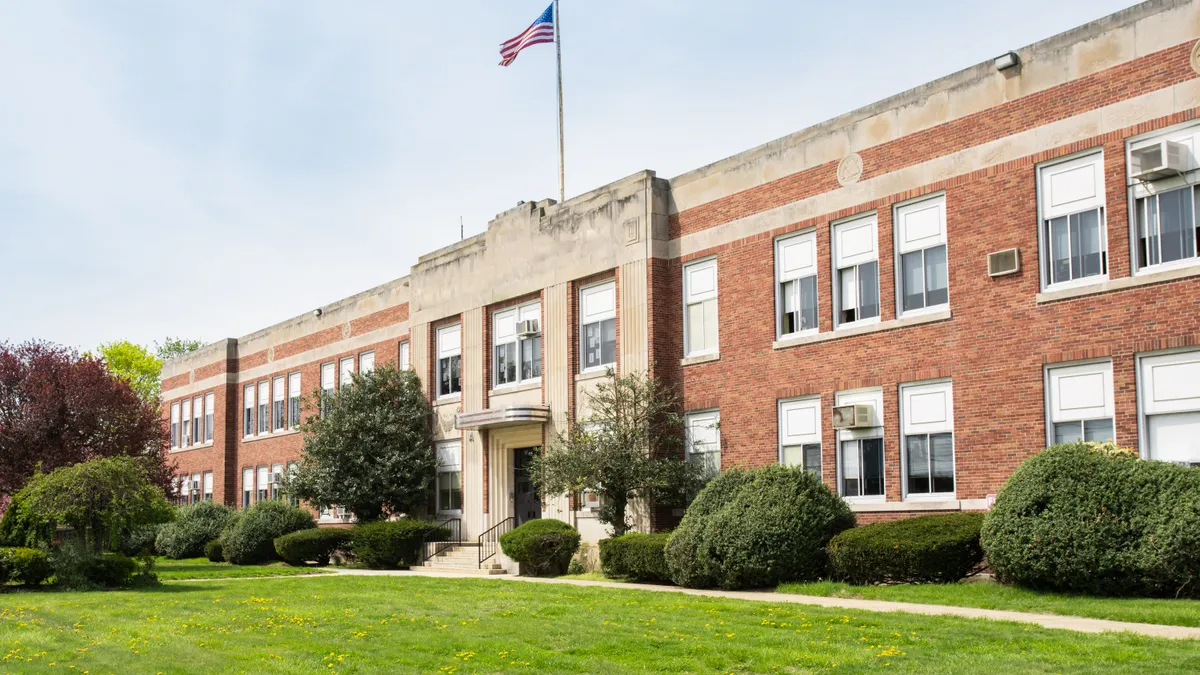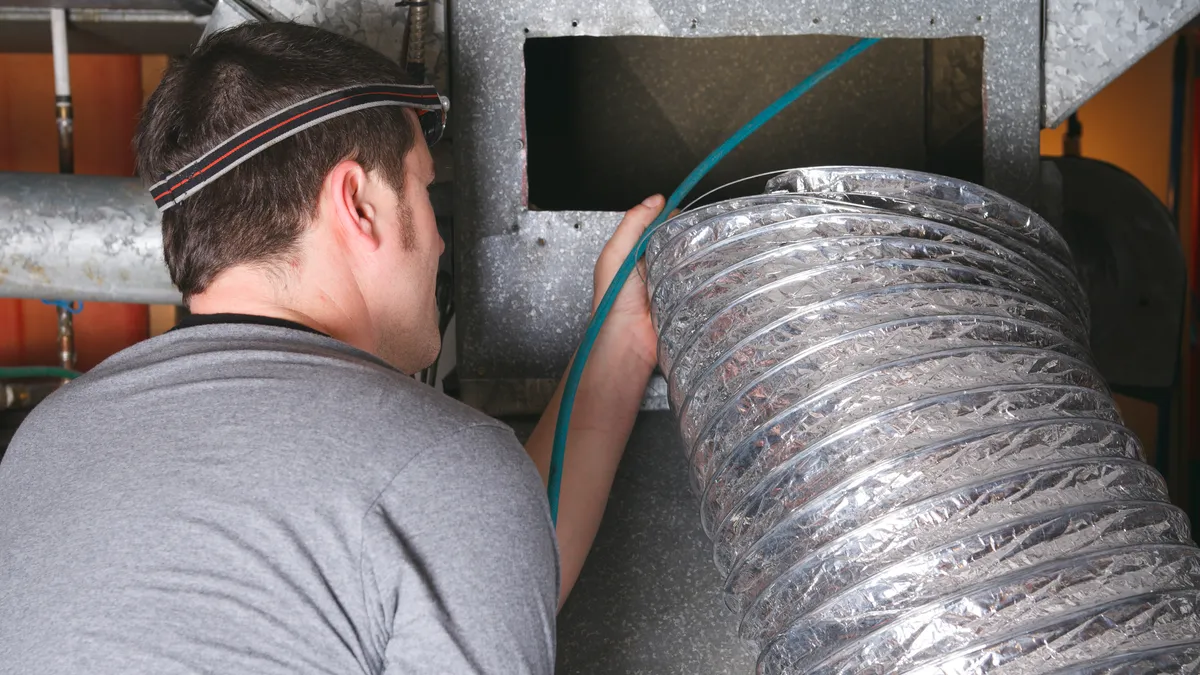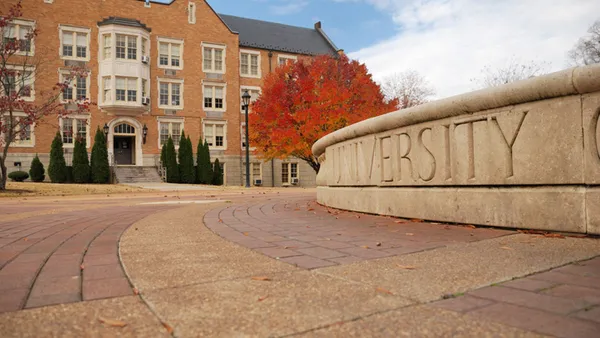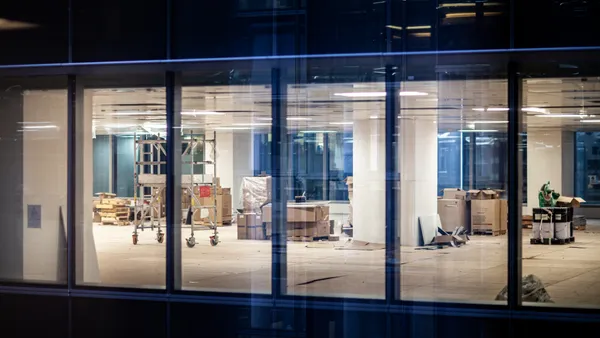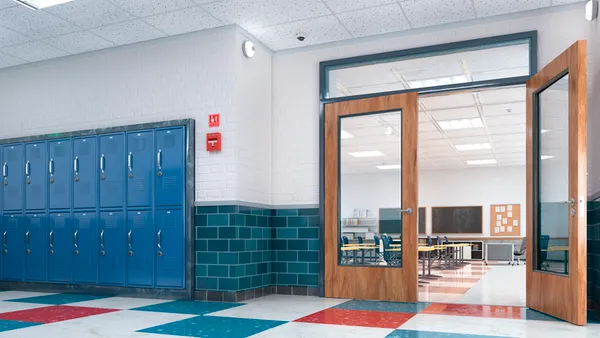Dive Brief:
- The average age of a main instructional school building is 49 years, according to survey findings released Thursday by the National Center for Education Statistics. Some 38% of these facilities were built even earlier — before 1970.
- A major building renovation was undertaken by fewer than half of the schools surveyed, with respondents saying it had been an average of 14 years since their last one. Additionally, the average time since their last major replacement or addition was 15 years.
- NCES' survey findings reflect long-standing concerns among policy officials over the conditions of older school facilities and the need to replace multiple building systems, including HVAC units.
Dive Insight:
NCES conducted a nationally representative survey in December of 1,625 public schools. The findings provide a glimpse into the state of aging school infrastructures nationwide.
While school facilities exist to house spaces for learning, they also affect the health and comfort of students and staff, NCES Commissioner Peggy Carr said in a statement.
“The condition of our school facilities plays a critical role in the education of more than 49 million U.S public school students,” Carr said. “These data provide insight into the current condition of our schools as the nation continues down the road to learning recovery.”
Though over a third of main buildings were built before 1970, NCES found that another 21% were constructed between 1970 and 1999, with an additional 20% built between 2000 and 2023.
Despite nearly a third of schools having had no major renovations, 13% reported one between 2020 and 2023, 16% between 2010 and 2019, 15% between 1990 and 2009, and 3% before 1990.
About one-third of schools — 31% — also had at least one portable building currently in use, NCES reported.
NCES also found 39% of schools have an indoor air quality coordinator, who is responsible for monitoring air quality conditions and reporting any related issues or complaints.
President Joe Biden’s administration has placed greater attention on K-12 indoor air quality in recent years. Concerns have long persisted among policy and education leaders over the status of older school buildings that receive no improvements for years and, in some cases, decades.
For instance, in 2021, the American Society of Civil Engineers gave schools a D+ in its 2021 Infrastructure Report Card. The group said 53% of public school districts reported a need to update or replace multiple building systems, such as heating, ventilation and air conditioning.
To address the high need for infrastructure improvements, some districts have tapped the historic federal pandemic-era relief dollars to fund school construction projects, including HVAC systems. Schools have also used these dollars to improve airflow and ventilation to prevent student and staff illness by minimizing the spread of COVID-19 and other airborne viruses.
But as deadlines close in for the obligation and spending of the Elementary and Secondary School Emergency Relief funds, and supply chain and staffing issues loom, district leaders worry that these projects won’t be completed in time.
Another avenue to assist with much-needed infrastructure upgrades is a federal grant program designed to help high-need school districts. The program was established by the Bipartisan Infrastructure Law of 2021 and is operated through the U.S. Department of Energy, which doubled the awarded funds during the inaugural round of the program in 2023, from $80 million to $178 million.



